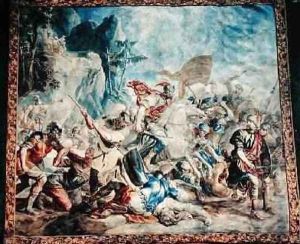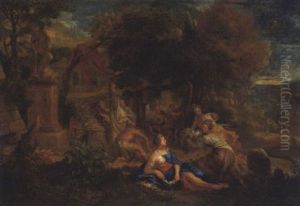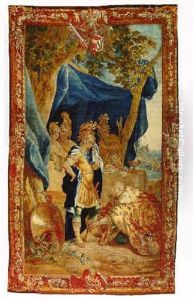Orley, Jan van Paintings
Jan van Orley was a Flemish Renaissance painter, draughtsman, and tapestry designer who was active in Brussels from the early 16th century until his death in 1541. He was born around 1490 in Brussels, which at the time was part of the Habsburg Netherlands, within the Holy Roman Empire. Van Orley came from a family of artists; his father, Valentin van Orley, was a painter and his brother, Bernard van Orley, was one of the leading painters at the court of Margaret of Austria and later Mary of Hungary.
Jan van Orley's early life and training are not well-documented, but it is presumed that he received his artistic training from his father and possibly in the workshop of his brother Bernard, who had a significant influence on his style. Jan's work shows a synthesis of Flemish artistic traditions with Italian Renaissance influences, which was typical for artists of his time who were looking to combine the best of Northern European realism with the idealized forms and perspective of Italian art.
His oeuvre included religious paintings, portraits, and designs for tapestries. Jan van Orley collaborated with other artists on various projects and was known to have worked with the well-known tapestry weaver Pieter de Pannemaker. One of his significant contributions was the design of tapestry series, which were highly prized commodities during the Renaissance. These tapestries often depicted historical or mythological scenes and were sought after by the nobility and wealthy patrons for their decorative and storytelling qualities.
Jan van Orley's work as a painter may not be as extensively documented as that of his brother Bernard, but it is known that he produced altarpieces and panel paintings. His style is characterized by a strong narrative element, attention to detail, and the use of rich colors. Although his paintings might not be as widely recognized today, they contributed to the vibrant artistic scene of Brussels during the Renaissance.
Van Orley's death in 1541 marked the end of his contributions to the Flemish art world. Despite the overshadowing fame of his brother Bernard, Jan van Orley remains an important figure in the study of Flemish Renaissance art. His works are held in various collections and continue to be studied for their craftsmanship and historical value.


